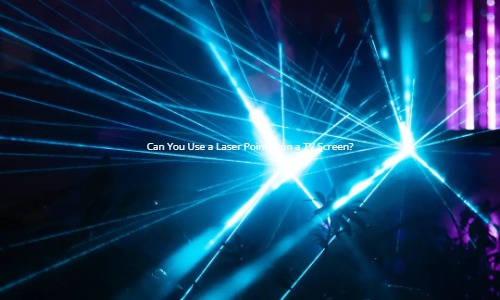In the ever-evolving landscape of technology, the curiosity to experiment often leads to unexpected challenges. One such question that arises is, “Can You Use a Laser Pointer on a TV Screen?” In this exploration, we’ll delve into the intricacies of this interaction, uncovering the reasons behind its incompatibility.
Table of Contents
Can You Use a Laser Pointer on a TV Screen?
As technology advances, so does our desire for innovative interactions. The question of using a laser pointer on a TV screen emerges as a fascinating experiment. However, attempting this unconventional approach can result in unforeseen consequences.
The Challenge with Laser Pointers and TV Screens
Modern TV screens, with their intricate technologies, are not designed to interact with the concentrated light emitted by laser pointers. Unlike traditional pointing devices, laser pointers can potentially interfere with the pixels and components of a TV screen, leading to damage.
Why a Traditional Laser Pointer Won’t Work
The fundamental reason lies in the diverse technologies used in TV screens, such as LCD, OLED, or QLED. These technologies do not respond to the wavelength and intensity of a typical laser pointer, making the interaction ineffective.
Exploring Alternatives
For those seeking ways to interact with their TV screens, safer alternatives exist. Touchscreen remotes, smart devices with casting capabilities, or specialized stylus pens are designed for modern electronic displays and provide a secure and enjoyable user experience.
Why doesn’t a laser work on a TV?
Understanding the reasons behind the incompatibility of a laser pointer with a TV screen requires exploring the science behind both technologies.
The Science Behind TV Screens
TV screens utilize intricate technology, including tiny pixels responsible for image production. Laser pointers emit highly concentrated light in a narrow wavelength, which, when directed at a TV screen, can disrupt the delicate balance of pixels.
Potential Risks
The risks associated with using a laser pointer on a TV screen range from temporary malfunctions to permanent damage. Intense light can cause pixel burnout, resulting in discolored spots or lines on the screen and potentially impacting the overall performance and longevity of the TV.
Why Can’t You Use a Traditional Laser Pointer on a TV Screen?
Delving deeper into the reasons for incompatibility, it’s essential to recognize the limitations of traditional laser pointers when used with TV screens.
Wavelength Mismatch
Traditional laser pointers typically operate at a wavelength that does not align with the technologies used in TV screens, such as LCD or OLED. Consequently, the TV screen remains unresponsive to the laser’s signal.
Technology Clash
Modern TV screens are equipped with advanced technology designed to enhance image quality and overall performance. The interaction of a laser pointer’s concentrated light with this sophisticated technology can disrupt the screen’s functionality and lead to malfunctions.
Conclusion
In conclusion, experimenting with a laser pointer on a TV screen may seem like a harmless endeavor but poses significant risks. The intricate technology of TV screens, coupled with the concentrated nature of laser pointers, creates a clash that can result in damage. To preserve your TV’s integrity and ensure a safe viewing experience, explore alternative methods specifically designed for modern electronic displays.

